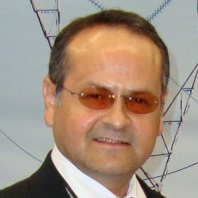Topic Editors


Control and Optimisation for Offshore Renewable Energy
Topic Information
Dear Colleagues,
Offshore renewable energy means the generation of electricity from ocean-based resources, which include wave energy, tidal energy, and offshore wind energy. Among the numerous sustainable energies, offshore renewable energy is playing a significant role which calls for optimum control and utilization.
We would like to invite submissions to this Topic on the subject of “Control and Optimisation for Offshore Renewable Energy”. Topics of interest include but are not limited to the following:
- Offshore renewable energy;
- Wind energy;
- Wind farm;
- Wind turbine;
- Wave energy;
- Wake modeling;
- Numerical wave tank;
- Tidal energy;
- Wind, wave, and tidal devices;
- Control;
- Optimization.
Prof. Dr. Olimpo Anaya-Lara
Dr. Stephanie Ordonez-Sanchez
Dr. Adam Stock
Topic Editors
Keywords
- wind energy
- wave energy
- tidal energy
- offshore renewable energy
Participating Journals
| Journal Name | Impact Factor | CiteScore | Launched Year | First Decision (median) | APC | |
|---|---|---|---|---|---|---|

Energies
|
3.2 | 5.5 | 2008 | 16.1 Days | CHF 2600 | Submit |

Journal of Marine Science and Engineering
|
2.9 | 3.7 | 2013 | 15.4 Days | CHF 2600 | Submit |

Oceans
|
- | - | 2020 | 45.2 Days | CHF 1600 | Submit |

Sustainability
|
3.9 | 5.8 | 2009 | 18.8 Days | CHF 2400 | Submit |

Water
|
3.4 | 5.5 | 2009 | 16.5 Days | CHF 2600 | Submit |

MDPI Topics is cooperating with Preprints.org and has built a direct connection between MDPI journals and Preprints.org. Authors are encouraged to enjoy the benefits by posting a preprint at Preprints.org prior to publication:
- Immediately share your ideas ahead of publication and establish your research priority;
- Protect your idea from being stolen with this time-stamped preprint article;
- Enhance the exposure and impact of your research;
- Receive feedback from your peers in advance;
- Have it indexed in Web of Science (Preprint Citation Index), Google Scholar, Crossref, SHARE, PrePubMed, Scilit and Europe PMC.


